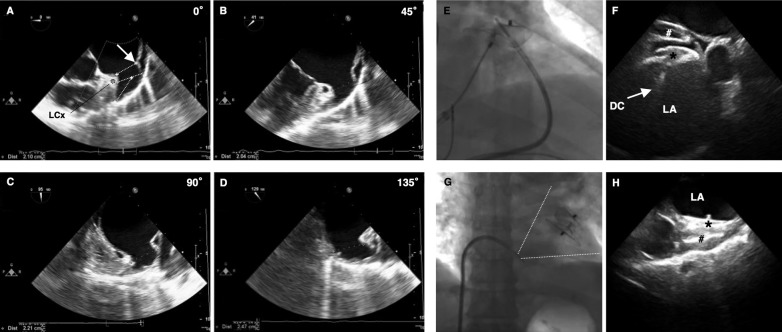Figure 3.
(A–D) Preprocedural transoesophageal echocardiography (TEE) imaging—left atrial appendage (LAA) anatomy and dimensions should be studied with the transducer array rotated through 0°, 45°, 90° and 135°. (A) Shows in which manner the LAA ostium, LAA neck width (orifice width or ‘landing zone’) and LAA depth should be measured. The LAA neck width is typically measured in a plane from the LCx coronary artery to a point 10 mm distal to the limbus (white arrow) of the left superior pulmonary vein (LSPV). In this case, we measured a neck width of 21–25 mm—which led to the choice of a 28 mm Amplatzer cardiac plug (ACP) device (because of oversizing with 3 to 5 mm). The risk of undersizing is device embolisation; the risk of oversizing is compression on the LCx and/or LSPV, as well as LAA perforation and device embolisation. (E–H) Use of ICE to guide implantation of a LAA closure device. ICE imaging is optimal with the ICE probe in (E) the left pulmonary artery as well as (G) with the transducer at the ostium of the coronary sinus. The ICE images were used to guide (F) the delivery and (H) proper deployment of the ACP device inside the LAA. DC, delivery cable; *disk of the ACP device; # lobe of the ACP device.

